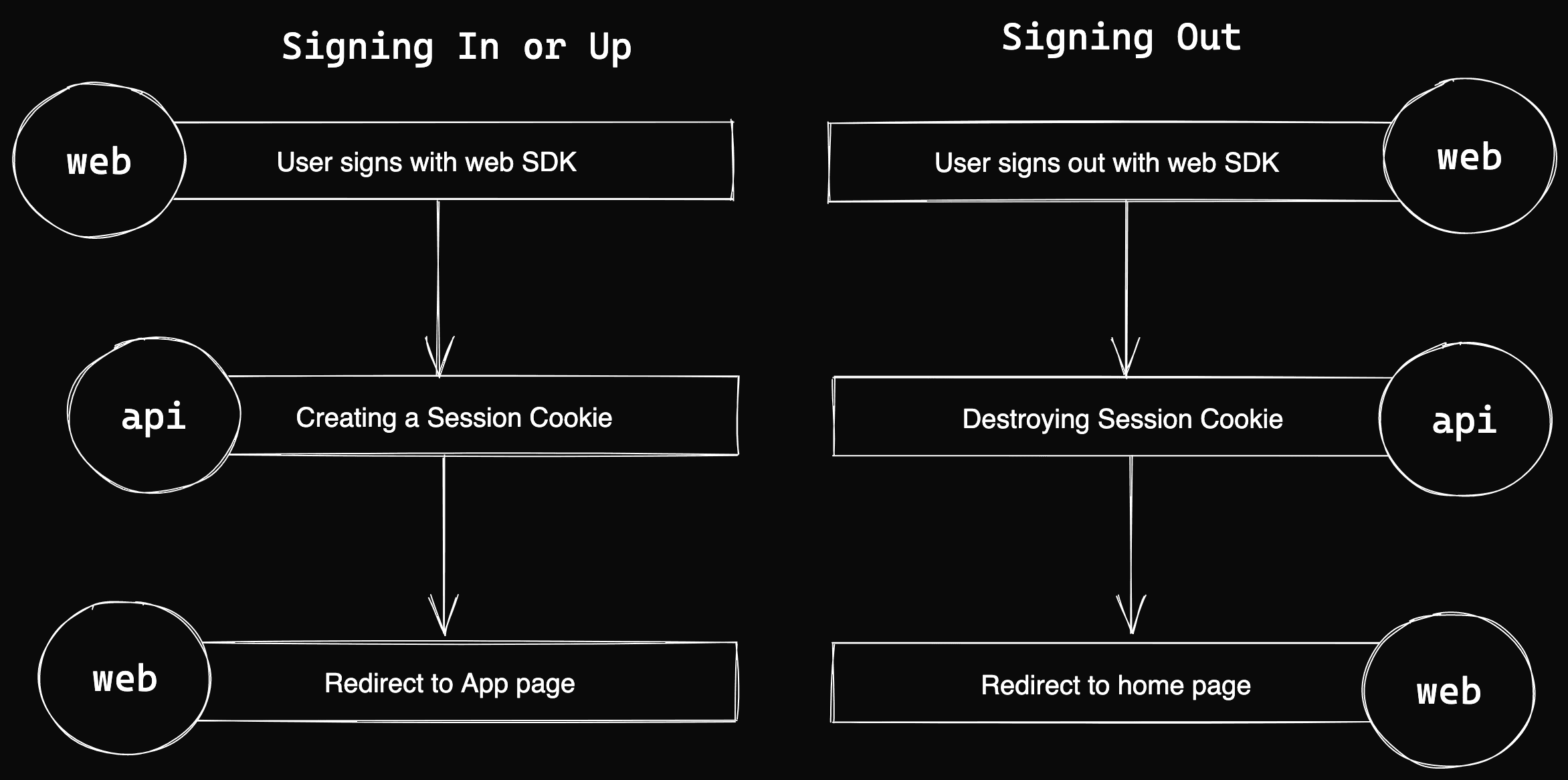Firebase and Next.js authentication flow
Learn how MakerKit handles the authentication flow with Firebase Auth and Next.js
If you use SSR, the flow is slightly different from what you may be used.
Typically, Firebase allows signing users in on the client-side. If you use SSR, we need a way to authenticate the user on the server-side.
To do so, we use Firebase Auth's session cookies: we create the cookie when the user signs in and then destroy it when the user signs out.
Step 1: User signs in using the client SDK
The user can sign in (or up) using the Firebase Auth client SDK from the client side.
Step 2: Creating a Session Cookie using an API endpoint
After being authenticated (signing in or up), the application requests to create and store a session cookie using an API endpoint.
The cookie is stored as an HTTP-only cookie and will be sent to the server, so we can authenticate users right when we render the page.
When needed, we can perform the necessary redirects and security checks server-side.
Step 3: User gets redirected to Application Home Page
The application renders a session-aware page if you have opted to use SSR on every page. Otherwise, the Firebase SDK should reflect the current session once the page has been rendered.
When the user is redirected to a protected page, the user's session authentication state is checked in the getServerSideProps function.
Step 4: User signs out
The client SDK starts a sign-out request when the user decides to sign out.
When Firestore Auth destroys the current user session, the event is intercepted by a listener and then calls the API endpoint to destroy the session cookie.
Here is an illustration of the flows:

Keeping the client and server sessions in sync
Because the Firebase Session cookies expire after 14 days, we need to keep the client SDK session in sync when the session cookie expires.
To do so, when the user signs in, we also store a cookie with the expiration date. When the client SDK detects that the server-side session cookie expired, the user gets automatically signed out.